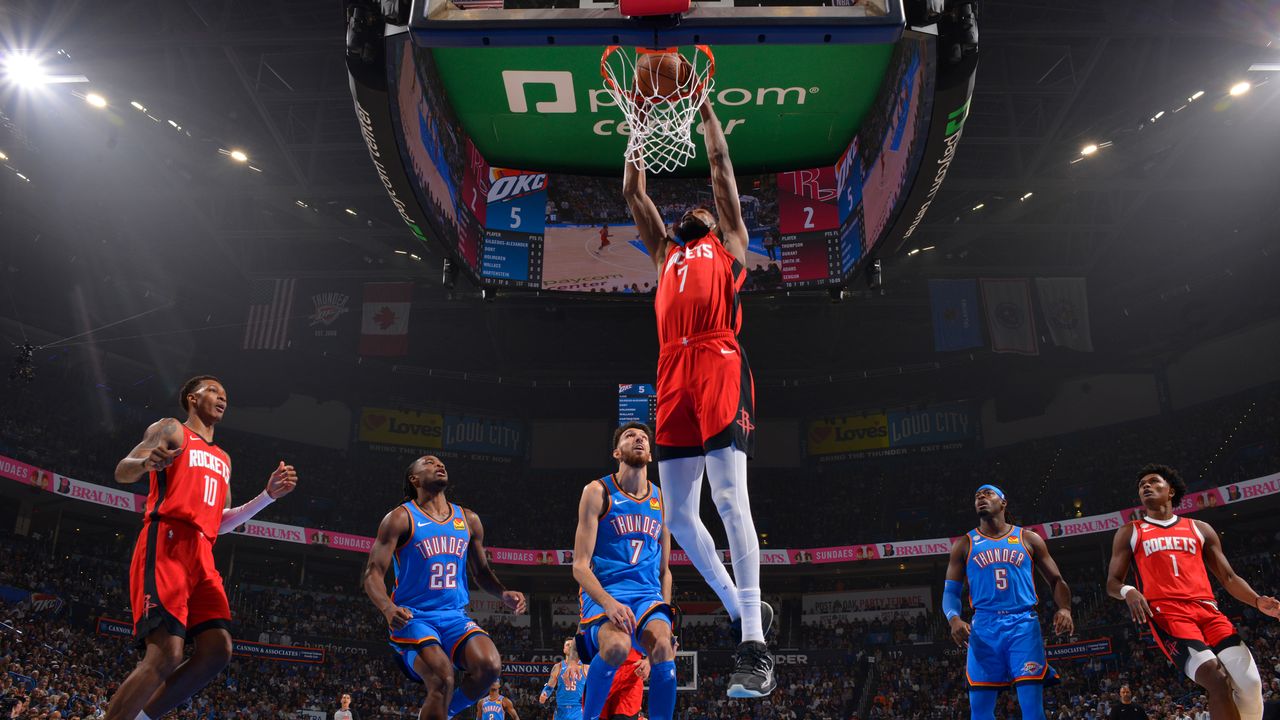Kevin Durant was drafted, second over all, by the Seattle SuperSonics, a team that ceased to exist seventeen years ago. After his rookie season, the SuperSonics left for Oklahoma City, where they were rebranded as the Thunder. Since then, his influence has shaped not only every franchise he’s been a part of but the entire league. This is easily visible on the court: when he came into the N.B.A., big men were still primarily bruisers. He was long and willowy, with the grace and finesse of a guard; there was some confusion about what position he should play. Now the league is filled with talented big men who can pass and shoot and defend, who can’t be easily stopped or shoehorned. Durant was a protagonist in various narratives that dominated conversations around the league, particularly those concerning team loyalty, individual agency, the way that particular personalities interact, and what motivates players. That such stories—and not narrower discussions of tactics or estimated plus-minus or whatever—did seem to matter so much to so many people was, depending on whom you asked, for better or worse.
Durant, for one, was often exasperated at how he was portrayed. But he could never quite shake his status as a protagonist, and it’s not clear whether he even wanted to. He became M.V.P. while playing for the Thunder before turning a great Golden State Warriors team into a dynasty—and then ending the reign, when he decamped for the Brooklyn Nets. The Nets were a disaster, and his next team, the Phoenix Suns, failed even more dramatically. The way he played was never to blame: he still moves like water, with the same capacity for stillness or torrential force. Off the court, he dabbled in media projects with his entertainment company, Boardroom, and devoted himself to other interests, including, famously, responding to trolls on the internet. He likes the “dopamine hit” of clapping back, he has explained. “That’s like my coffee in the morning.”
Last Tuesday, on the N.B.A.’s opening night, Durant made his début with the Houston Rockets. His teammates are young and on the rise—coming off a fifty-two-win season, with eleven players under thirty years old, including three starters who are twenty-three or younger. Durant is thirty-seven. There has been a lot of talk about how much his teammates would learn from his élite example: how to train, how to eat, how to rest, how to compete. But he’s not there merely to teach. The Rockets have signed Durant to a two-year, ninety-million-dollar extension—a team-friendly deal, yes, but still the kind of money you pay to the player you expect will be the best on your roster. The Rockets are betting that Durant, despite being well past the retirement age of most players, can elevate them into genuine title contenders. He makes certain things feasible, including a lineup full of bigs that the team’s coach, Ime Udoka, has begun using, in an effort to stymie teams with more normal statures. I confess, however, that the narrative possibilities are, to me, even more tantalizing. This is an unpredictable chapter in the life of a complicated and compelling man.
The outsized relevance of the league’s oldest stars is not new. LeBron James is turning forty-one this year. Stephen Curry is thirty-seven, and will be playing for the Warriors alongside Al Horford (thirty-nine), Jimmy Butler (thirty-six), and Draymond Green (thirty-five). And the Warriors are not even the oldest team in the league; that would be the Los Angeles Clippers, God help them. Athletes across numerous sports have been prolonging their careers, with more focus on nutrition, training techniques, and financial incentives. But the trend seems especially noticeable right now in basketball.
This is surprising given some of the ways in which the league is changing. The pace of the game is becoming increasingly punishing. More and more teams are playing full-court defenses and trapping ball handlers. These strategies favor fresh legs and bodies with less wear and tear, younger players who can endure the long regular season and hold up in spring.
And a number of dominant players have arrived in the league after the James-Curry-Durant cohort: Giannis Antetokounmpo, who is now thirty, has been an unstoppable force. Nikola Jokić, also thirty, is widely seen as the best player in the league. The current M.V.P., Shai Gilgeous-Alexander, is twenty-seven, and Luka Dončić, a favorite to become the next M.V.P., is twenty-six. The average age of the champion Thunder is 25.6 this year, nearly eight years younger than that of the Clippers—and the team that the Thunder beat in the Finals, the Indiana Pacers, also played a rotation that consisted almost entirely of players who were thirty and under. The Thunder are the consensus pick to win the championship again this season.

